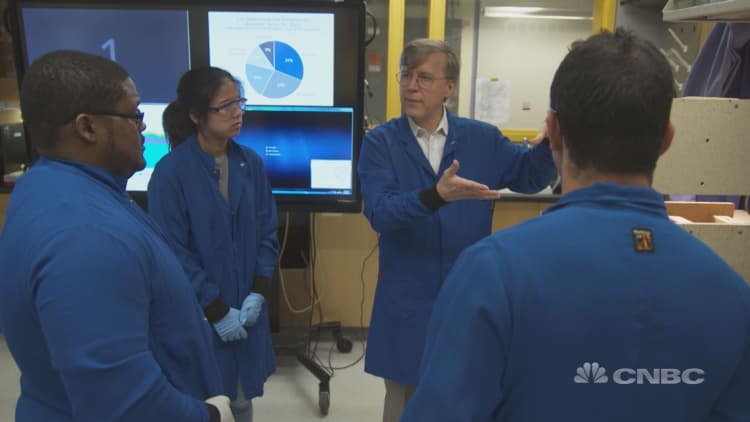
After decades of wrangling, governments around the world are beginning to take the issues of climate change and sustainability seriously.
Last year, at the COP21 summit in Paris, world leaders agreed to make sure global warming stayed "well below" 2 degrees Celsius and to "pursue efforts" to limit the temperature rise to 1.5 degrees Celsius. And last weekend, the U.S. and China – two of the world's biggest polluters – formally entered that agreement.
But what is needed as a next step is bright minds to come up with ideas to help society make the leap to a more sustainable future.
At the Massachusetts Institute of Technology (MIT), the MIT Energy Initiative is looking to harness the world's brightest minds to develop technology and ideas to provide "clean, affordable and plentiful sources of energy."
And far from being based in theory, the results from the research taking place at MIT have practical, real world applications.
"In our lab here we are producing biofuels as part of student projects, which are being sponsored in part the National Renewable Energy Laboratory, based in Colorado," Jean Francois Hamel, research engineer and director of the undergraduate teaching laboratories at MIT, told Sustainable Energy.
"So the federal government lab is involved in suggesting projects of importance to the world," Hamel added. "And here, we are using yeast and soon algae in order to make lipids, from which you can make biodiesel, which is a fuel for transportation."
Slowly but surely, biodiesel is becoming part of the energy mix in the U.S. In June 2016, 135 million gallons were produced, two million gallons higher than May 2016.
It's not just MIT that is looking to put innovative clean energy ideas into practice. In the Netherlands, for example, researchers at the Eindhoven University of Technology have developed large colorful noise barriers for highways that also generate solar energy; in the U.K., researchers have developed a wearable energy generator powered with urine.
As one of the world's leading higher education institutions, MIT is able to draw on a wealth of talent to further its reputation for excellence in sustainability.
"MIT has a number of centers on campus that do interdisciplinary research, and the benefit of that is that you have people that are working on the policy side, on the business side, on the technology side all at once," Natasha Wright, a PhD student at MIT's department of mechanical engineering, said.
"It makes it really easy to transition these technologies into the real world because we understand the entire space of that technology before we are trying to get it patented and move forward with companies and licenses."





